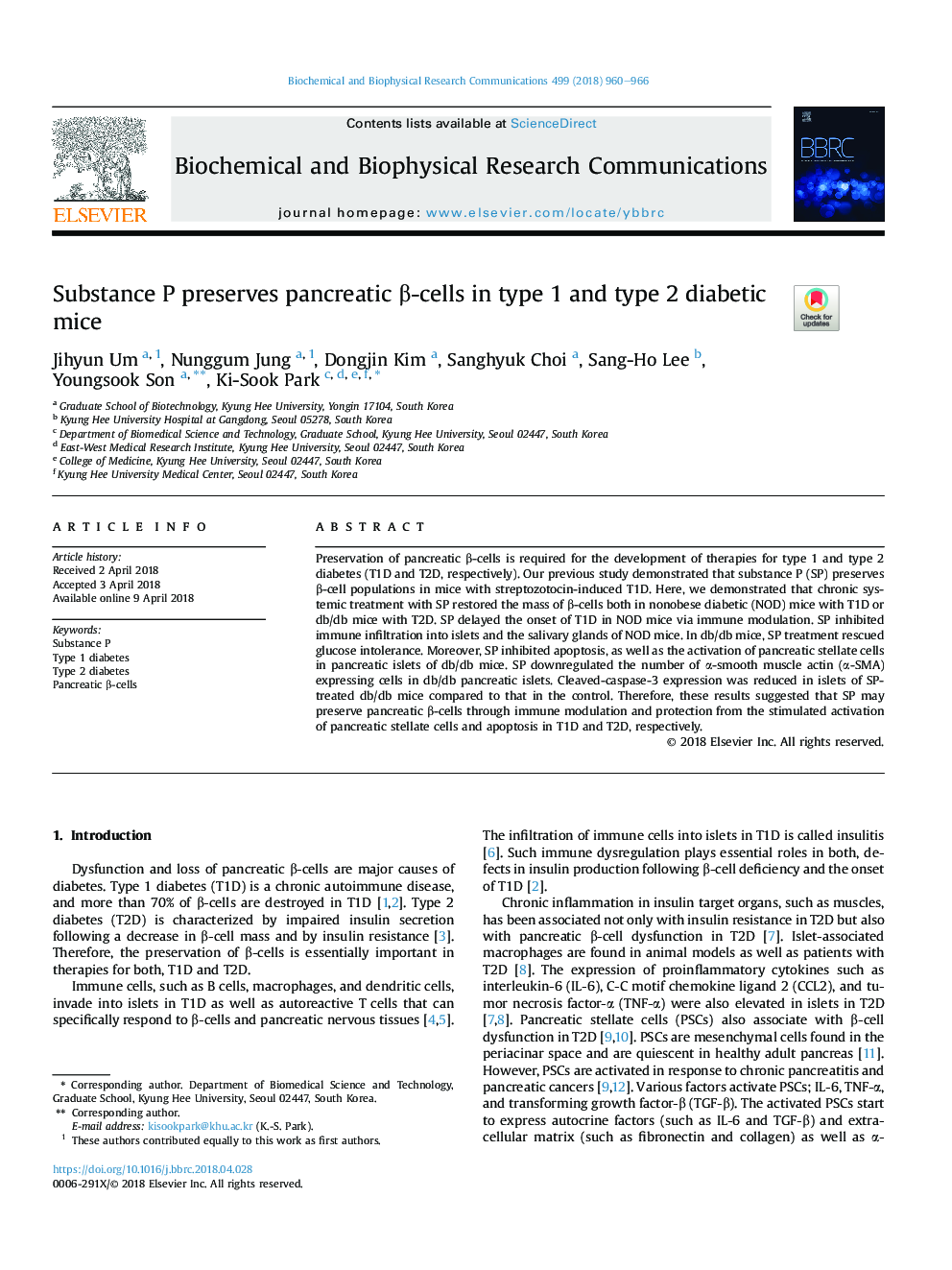| Article ID | Journal | Published Year | Pages | File Type |
|---|---|---|---|---|
| 8293015 | Biochemical and Biophysical Research Communications | 2018 | 7 Pages |
Abstract
Preservation of pancreatic β-cells is required for the development of therapies for type 1 and type 2 diabetes (T1D and T2D, respectively). Our previous study demonstrated that substance P (SP) preserves β-cell populations in mice with streptozotocin-induced T1D. Here, we demonstrated that chronic systemic treatment with SP restored the mass of β-cells both in nonobese diabetic (NOD) mice with T1D or db/db mice with T2D. SP delayed the onset of T1D in NOD mice via immune modulation. SP inhibited immune infiltration into islets and the salivary glands of NOD mice. In db/db mice, SP treatment rescued glucose intolerance. Moreover, SP inhibited apoptosis, as well as the activation of pancreatic stellate cells in pancreatic islets of db/db mice. SP downregulated the number of α-smooth muscle actin (α-SMA) expressing cells in db/db pancreatic islets. Cleaved-caspase-3 expression was reduced in islets of SP-treated db/db mice compared to that in the control. Therefore, these results suggested that SP may preserve pancreatic β-cells through immune modulation and protection from the stimulated activation of pancreatic stellate cells and apoptosis in T1D and T2D, respectively.
Related Topics
Life Sciences
Biochemistry, Genetics and Molecular Biology
Biochemistry
Authors
Jihyun Um, Nunggum Jung, Dongjin Kim, Sanghyuk Choi, Sang-Ho Lee, Youngsook Son, Ki-Sook Park,
